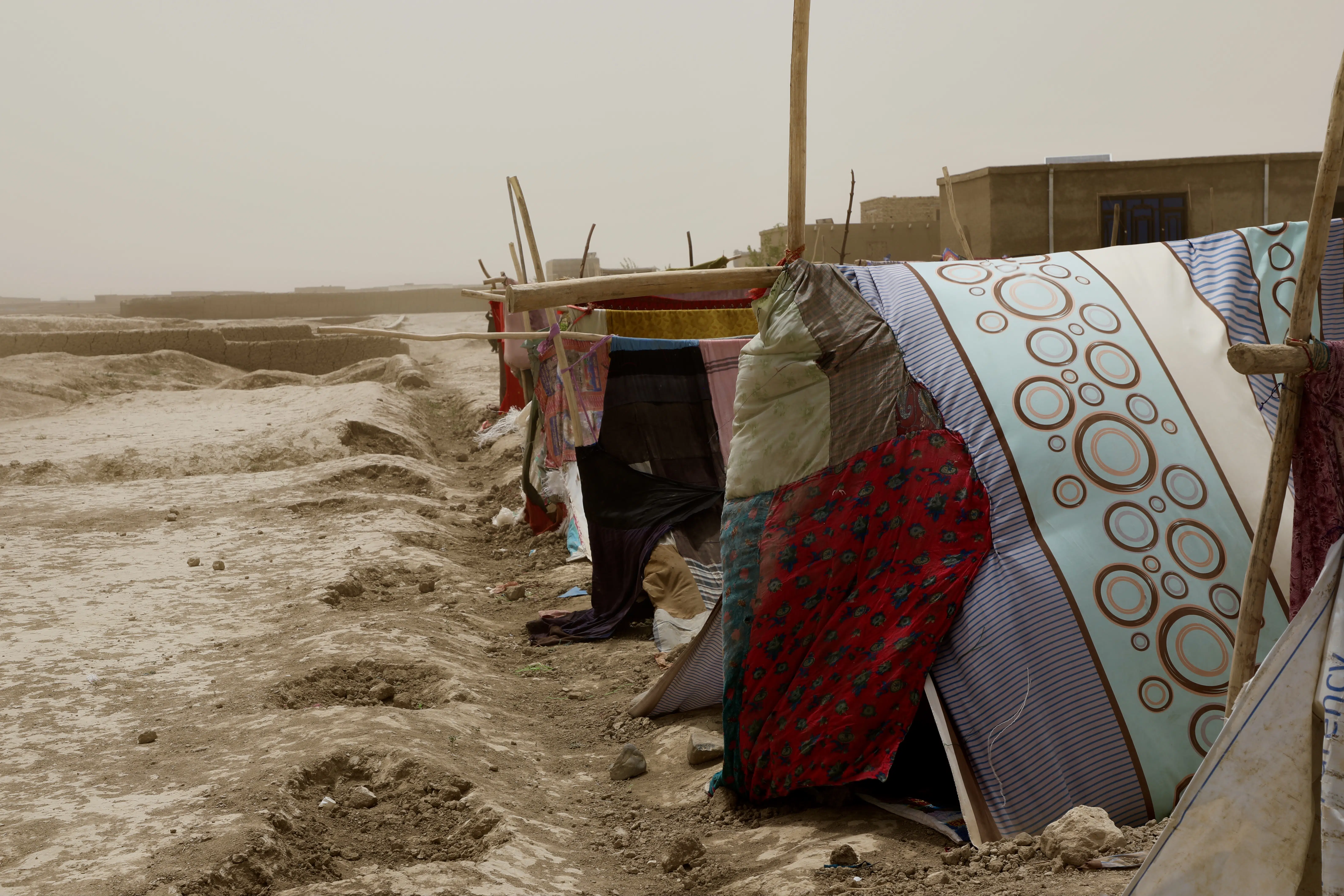Afghanistan Situation
Hundreds of thousands forced to flee due to intense fighting.
The crisis in Afghanistan is a cycle of conflict and loss that has lasted more than 40 years. Generations have never known peace. Millions of people in Afghanistan are experiencing misery and hunger amid decades of conflict, economic collapse, drought, and freezing wintertime temperatures.
Afghanistan, which has endured repeated crises, faces its darkest time.
Photo: ©UNHCR/Hassib Sediqi
The people of Afghanistan are in the grip of one of the world’s worst crises. Please help us reach refugees and internally displaced people with life-saving aid.

Essential items
including blankets, sleeping mats, kitchen sets, buckets, and soap
Emergency shelter
for protection
Sanitation
including access to clean water
What is happening in Afghanistan?
Some 3.5 million people are displaced due to conflict, and many children are out of school. The health care system is collapsing, fundamental rights of women and girls are under threat, farmers and herders are struggling amidst the climate crisis, and the economy is in free fall. Half of Afghanistan’s population experiences acute hunger. Conflict has subsided, but violence, fear, and deprivation remain.
More than half of the population of the country is currently dependent on life-saving and essential humanitarian assistance. This includes many internally displaced people, who often live in makeshift settlements under difficult conditions. The overwhelming majority of Afghans forced to flee remain within the country, as close to their homes as fighting will allow. Some 800,000 civilians have been displaced internally since the beginning of January 2021. The total internally displaced people within Afghanistan has grown to an estimated 3.4 million people. UNHCR is particularly worried about the impact of the conflict on women and girls.
What is UNHCR doing?
UNHCR’s unrelenting focus is upon millions of highly vulnerable people affected by forced displacement inside Afghanistan, particularly 3.5 million conflict-displaced Afghans (IDPs), refugees, asylum seekers, and the IDP and refugee voluntary returnees.
UNHCR encourages cash for IDPs to meet their needs and empower people in need to access essential services, including healthcare. So far in 2022, UNHCR has supported 560,000 people by providing cash assistance to meet their basic needs and shelter requirements. Psychosocial support and sanitary kits are also being provided to IDPs, especially women and girls.
A widespread hunger crisis was averted last winter, but amid on-going human rights concerns, and the global economic crisis, Afghans continue to face severe food insecurity, malnutrition and a winter shelter crisis.
How long are Afghan refugees displaced?
“Afghanistan’s displacement crisis is one of the largest and most protracted in UNHCR’s seven-decade history. We’re now seeing a third generation of Afghan children born in exile,’’ says UN High Commissioner for Refugees Filippo Grandi.
Despite the extremely precarious humanitarian situation, human rights violations and fragile economic environment, small numbers of refugees from among the 2.3 million in Iran and Pakistan are voluntarily repatriating, with 1,533 (7 Aug. 2022) voluntary returns this year.
How can I help people in Afghanistan?
The easiest way to give is through our secure online donation form. You can give monthly or one-time on behalf of an individual or a corporation. Your donation will help Afghani refugees and internally displaced people who need it most – our donors make our work possible. All contributions to the UNHCR are 100% tax-deductible.
Where can I access the latest data and reports?
Afghanistan Operations—for the latest on UNHCR’s relief work to protect displaced people inside Afghanistan.
Afghanistan Situation Portal—for the latest updates on the crisis overall, including UNHCR situation reports, funding requirements and UNHCR’s support for neighbouring countries taking in refugees from Afghanistan.
Did you know that more than half of the population of Afghanistan is currently dependent on life-saving and essential humanitarian aid?

“There have been nights when we had nothing at all to eat,” Maryam explained.
Having been forced to move four times in the span of a few years, her children are unable to attend school and are dressed in worn clothes covered in grime and dust.
A widowed mother-of-four struggling to take care of her family in a camp is among the 700,000 Afghans displaced by the upsurge in fighting at the start of 2021.
Photo: ©UNHCR/Hassib Sediqi
Donate Today
Please help Afghan families.
Donate Today
Please help refugee families and internally displaced people in Afghanistan.



